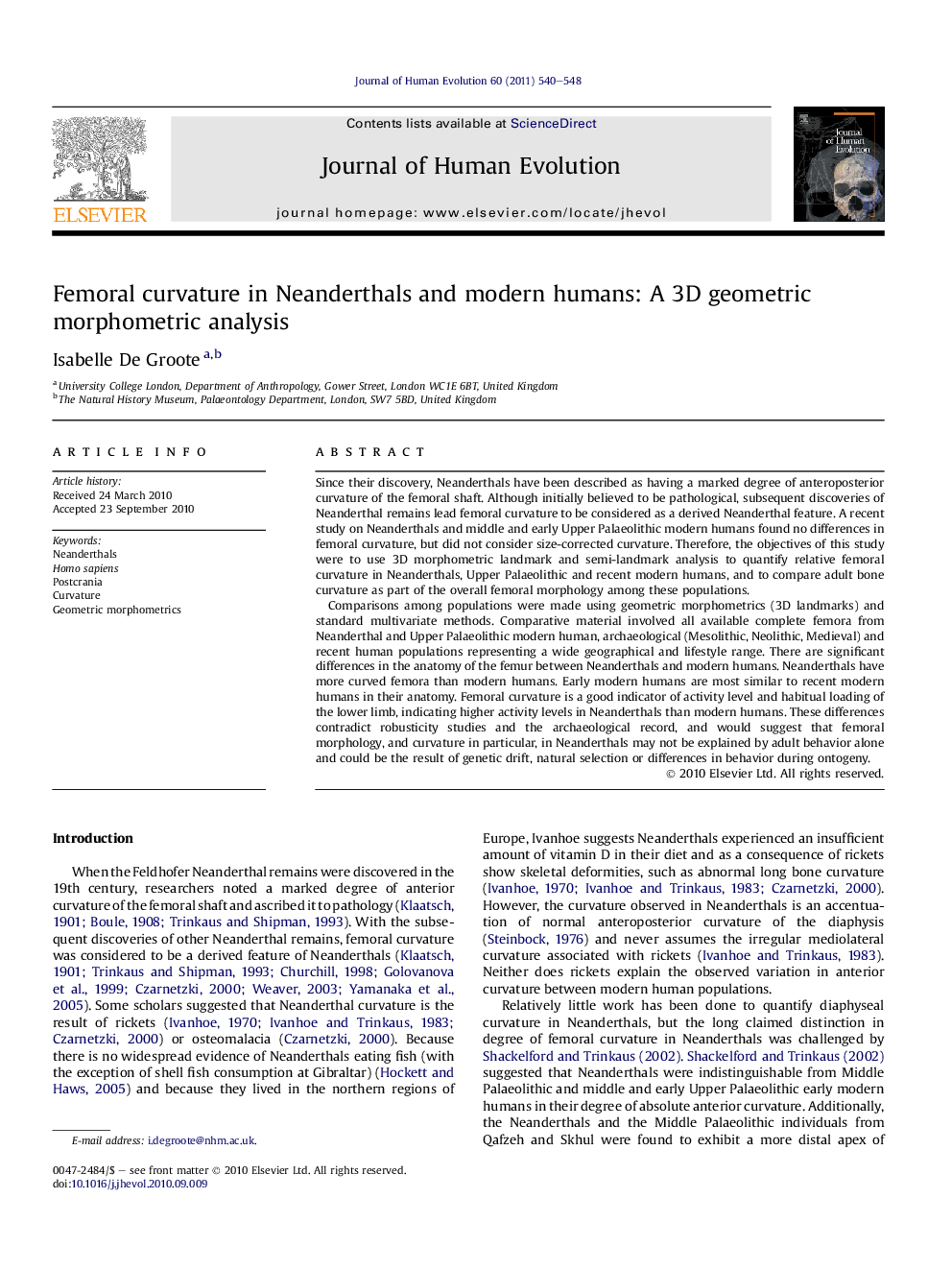| کد مقاله | کد نشریه | سال انتشار | مقاله انگلیسی | نسخه تمام متن |
|---|---|---|---|---|
| 4556618 | 1329491 | 2011 | 9 صفحه PDF | دانلود رایگان |

Since their discovery, Neanderthals have been described as having a marked degree of anteroposterior curvature of the femoral shaft. Although initially believed to be pathological, subsequent discoveries of Neanderthal remains lead femoral curvature to be considered as a derived Neanderthal feature. A recent study on Neanderthals and middle and early Upper Palaeolithic modern humans found no differences in femoral curvature, but did not consider size-corrected curvature. Therefore, the objectives of this study were to use 3D morphometric landmark and semi-landmark analysis to quantify relative femoral curvature in Neanderthals, Upper Palaeolithic and recent modern humans, and to compare adult bone curvature as part of the overall femoral morphology among these populations.Comparisons among populations were made using geometric morphometrics (3D landmarks) and standard multivariate methods. Comparative material involved all available complete femora from Neanderthal and Upper Palaeolithic modern human, archaeological (Mesolithic, Neolithic, Medieval) and recent human populations representing a wide geographical and lifestyle range. There are significant differences in the anatomy of the femur between Neanderthals and modern humans. Neanderthals have more curved femora than modern humans. Early modern humans are most similar to recent modern humans in their anatomy. Femoral curvature is a good indicator of activity level and habitual loading of the lower limb, indicating higher activity levels in Neanderthals than modern humans. These differences contradict robusticity studies and the archaeological record, and would suggest that femoral morphology, and curvature in particular, in Neanderthals may not be explained by adult behavior alone and could be the result of genetic drift, natural selection or differences in behavior during ontogeny.
Journal: Journal of Human Evolution - Volume 60, Issue 5, May 2011, Pages 540–548